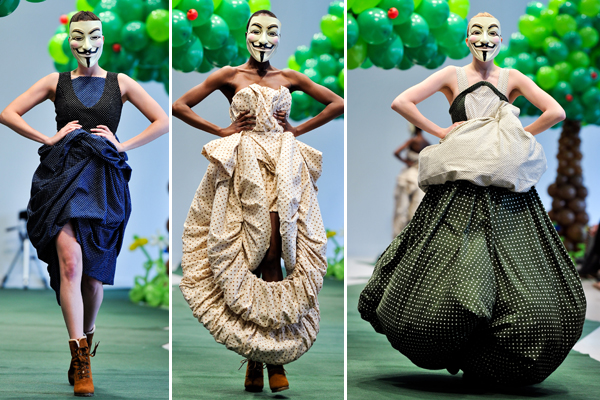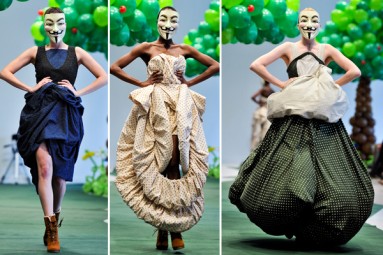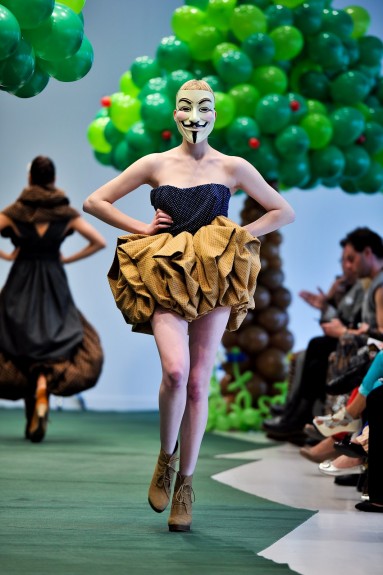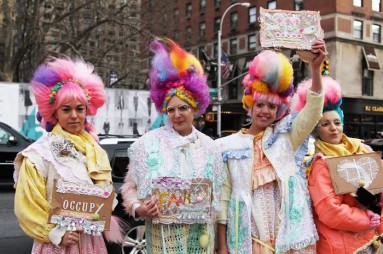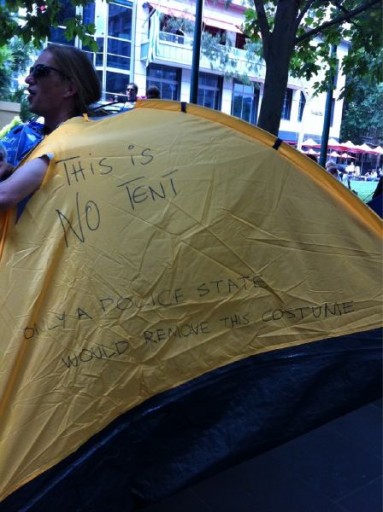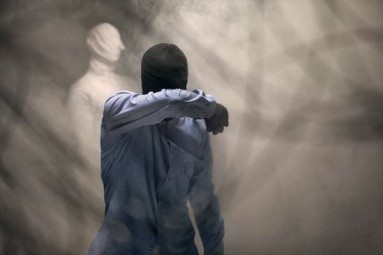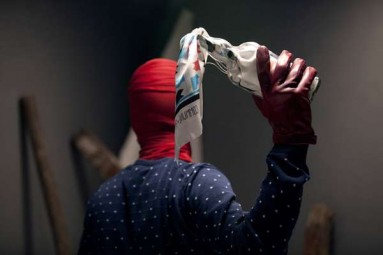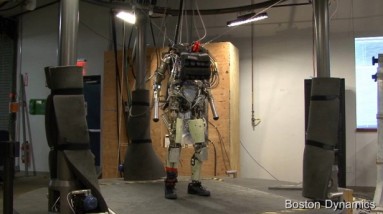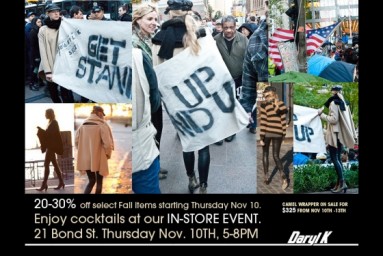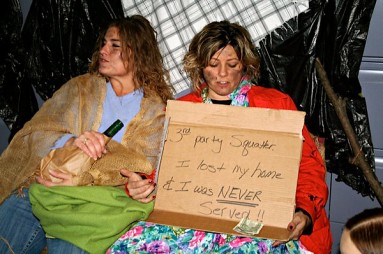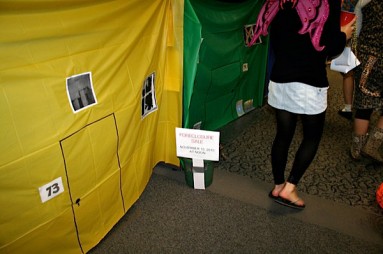'The kids aren’t too bright,' he is telling me on this particular day. 'They’ll tell you then can always spot an undercover, they’ll tell you about "the kind of car he drives." They aren’t talking about undercovers, they’re talking about plainclothesmen who just happen to drive unmarked cars, like I do. They can’t tell an undercover. An undercover doesn’t drive some black Ford with a two-way radio.'
—Joan Didion, 'Slouching Towards Bethlehem'
The occurrence of appearance should come as no surprise. Fashion is endowed with the potential to inform a political reality—whether the point it makes is illustrative, illuminating, or impinging is a separate question—because fashion comes from people. The way people self-organize is always impacted by the external expression of social and political relationships, whether they be between police/denizen, publication/reader, store owner/consumer, designer/industry, and so on.
The subject of this twenty-item, two-part compilation is how fashion and clothing have played a primary or at least highly accomplice role in the dynamics of Occupy as a moment and mobilization within the wider political frontiers of the past year. They are presented in a not-so-particular order, or one that is more intuitive than analytical. I hope they can generate more observations and discursive ideas toward what I like to affix my hat to: the indivisible unit of politics and aesthetics.
1. Twenty-one year old designer Adrian Wu put Guy Fawkes masks on runway models for 'Hierarchy of Needs,' his Fall/Winter 2012 collection at Toronto Fashion Week.
In the show's program Wu wrote,
I used the mask as a commentary to the specific comparisons between North American Politics versus European Politics and how it effects Human Rights by citing the movie 'V for Vendetta.'
I thought the real provocation was the jarring element of the masked theme with the all-balloon tree bubble landscape. The effect is somewhere between breezy and spooky, light-hearted and uneasy.
? ? ?
2. An Oakland Copwatch video showing several police officers in 'protester' attire who infiltrated Occupy Oakland.
? ? ?
3. In 'Occupied Thoughts,' Susie Bubble blogger Susanna Lau wrote about New York-based designer Andrea Diodati's self-styled protest on the struggles of independent designers during fashion week:
Her point was a valid one and potent especially in New York, where you can basically buy your way on to the schedule, resulting in a three hundred and fifty plus show jammed schedule that no singular human being could or ever want to possibly cover in its entirity. Indie designers like Diodati may not get as raw a deal all over the world and LFW is about to begin where show sponsorship based on merit is very much alive and well but Occupy as a theme to link with fashion has definitely been at the forefront of my mind, especially when commentors during the August riots were rather disparaging towards me for even deigning to talk about fashion at a time when it seemed the least tactful to do so.
I was wondering when Occupy's movement in the political/economic world would find its way transplanting itself to fashion, an industry of inequality, that is so arbritary that frankly, I'm too bewildered to even question why things are, the way they are.
? ? ?
4. When tents were banned as structures, Australia's 'Tent Monsters' devised International Wear a Tent for Human Rights Day.
Occupy Melbourne struck a celebratory and defiant tune: 'Only a police state would remove this costume.'
That premonition was actualized. In a nighttime multi-officer arrest on 11 December, 2011, an activist called The Baron was arrested for donning a tent. A woman (at 0:17) asked, 'Are you guys the fashion police now?'
? ? ?
5. Commune de Paris' Spring/Summer 2012 collection, mimicking Molotov-throwing and face-covering under smoky and ominous street lighting, invoked this reaction on 'anarchist apparel' from the site Trend Hunter:
The images from the new Commune de Paris Spring/Summer 2012 collection presents a variety of intriguing scenes to capture the attention of youths at which the brand is aimed. Implied violence and rebellious spirit are clearly depicted in these images, which are used to create an anarchist’s apparel. ?In one image, a masked figure in a t-shirt is caught in a striking pose in which he is about to throw a glass bottle with a fuse in it. Another photo depicts two masked men waiting for some smoke and debris to clear the air. Beautiful lighting, dynamic compositions and stylish, wearable clothing make this editorial one of the more creative releases this year. The Commune de Paris Spring/Summer 2012 line tries to remind the viewers of this series that there can be beauty in anarchy too.
? ? ?
6. Some articulations on Occupy and clothing choices from Twitter:
I think my [Occupy Oakland] arrest had a great deal to do with profiling. Thinking of keeping a change of nice-looking clothes in my car just in case.
Have you guys seen my "We are the 99%" line of formal wear?
Re US militarising police: Black Darth Vader look w/ shoulder pads & helmet etc is calculated to intimidate
? ? ?
7. As the public grew more acclimated to the sight of police in 'Robocop' suits, the revelation of an army-developed testing suit came to the fore. A Boston-based firm (nota bene: the first crackdown on the Occupy Boston encampment, which I wrote about here, was carried out primarily by riot police in face shields, helmets, and batons) manufactured a model robot for the Pentagon called the PETMAN (Protection Ensemble Test Manequin) that tries on clothes. It is also capable of sweating and other behaviors illustrating human 'stress factors.'
? ? ?
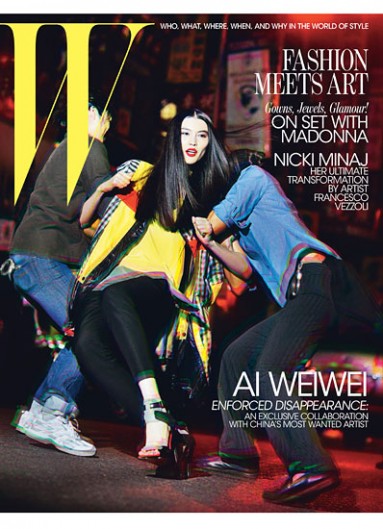 8. Though the editorial was not explicitly linked to Occupy, W magazine (frequently cited as the primary fashion publication of the über-wealthy) published a front-cover November 2011 collaboration with 'China's Most Wanted' Ai Weiwei. The photos consisted of staged theatrics of models getting arrested, handcuffed, interrogated, and in one particularly eroticized shower scene, fully strip-searched.
8. Though the editorial was not explicitly linked to Occupy, W magazine (frequently cited as the primary fashion publication of the über-wealthy) published a front-cover November 2011 collaboration with 'China's Most Wanted' Ai Weiwei. The photos consisted of staged theatrics of models getting arrested, handcuffed, interrogated, and in one particularly eroticized shower scene, fully strip-searched.
? ? ?
9. 'Daryl K's Occupy Wall Street Sale.' That's the subject line of an email the company sent out to advertise an in-store cocktail event. New York Magazine's The Cut blog quipped: 'Nothing says 99 percent like a $325 camel wrap-coat.'
? ? ?
10. A former employee of the Steve J. Baum P.C. law firm tipped of The New York Times' Joe Nocera with photos of its annual Halloween bash, in which staffers dressed up as destitute people in dirty and tattered clothing after losing their homes to bank foreclosure.
Nocera wrote:
The firm, which is located near Buffalo, is what is commonly referred to as a 'foreclosure mill' firm, meaning it represents banks and mortgage servicers as they attempt to foreclose on homeowners and evict them from their homes. Steven J. Baum is, in fact, the largest such firm in New York; it represents virtually all the giant mortgage lenders, including Citigroup, JPMorgan Chase, Bank of America and Wells Fargo.
When I called a press spokesman for Steven J. Baum to ask about the photographs, he sent me a statement a few hours later. 'It has been suggested that some employees dress in ... attire that mocks or attempts to belittle the plight of those who have lost their homes,' the statement read. 'Nothing could be further from the truth.' It described this column as 'another attempt by The New York Times to attack our firm and our work.'
The photos proved so Titanically damaging that even Freddie Mac and Fannie Mae broke off their relations with the Baum firm. Less than a month after the Times reveal by Nocera, the company shut down, and in a textbook display of karmic tragedy, laid off 89 of its employees.
